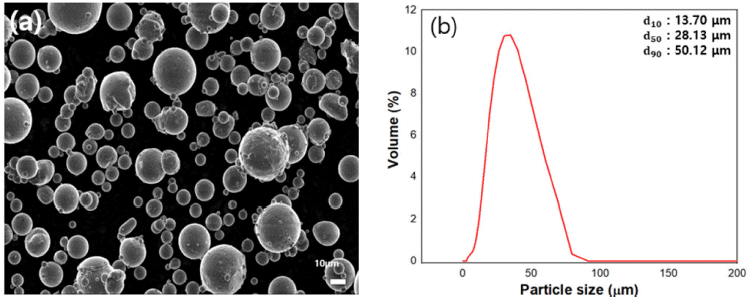- [Korean]
- Development of Lithium Lanthanum Titanate (LLTO) Membrane Manufacturing Process for Selective Separation of Lithium Ion
-
Young Il Kim, Sang Cheol Park, Kwang Ho Shin, InYeong Kim, Kee-Ahn Lee, Sung-Kyun Jung, Bin Lee
-
J Powder Mater. 2023;30(1):22-28. Published online February 1, 2023
-
DOI: https://doi.org/10.4150/KPMI.2023.30.1.22
-
-
2,040
View
-
39
Download
-
1
Citations
-
 Abstract Abstract
 PDF PDF
The global demand for raw lithium materials is rapidly increasing, accompanied by the demand for lithiumion batteries for next-generation mobility. The batch-type method, which selectively separates and concentrates lithium from seawater rich in reserves, could be an alternative to mining, which is limited owing to low extraction rates. Therefore, research on selectively separating and concentrating lithium using an electrodialysis technique, which is reported to have a recovery rate 100 times faster than the conventional methods, is actively being conducted. In this study, a lithium ion selective membrane is prepared using lithium lanthanum titanate, an oxide-based solid electrolyte material, to extract lithium from seawater, and a large-area membrane manufacturing process is conducted to extract a large amount of lithium per unit time. Through the developed manufacturing process, a large-area membrane with a diameter of approximately 20 mm and relative density of 96% or more is manufactured. The lithium extraction behavior from seawater is predicted by measuring the ionic conductivity of the membrane through electrochemical analysis. -
Citations
Citations to this article as recorded by  - A Study on Particle and Crystal Size Analysis of Lithium Lanthanum Titanate Powder Depending on Synthesis Methods (Sol-Gel & Solid-State reaction)
Jeungjai Yun, Seung-Hwan Lee, So Hyun Baek, Yongbum Kwon, Yoseb Song, Bum Sung Kim, Bin Lee, Rhokyun Kwak, Da-Woon Jeong
journal of Korean Powder Metallurgy Institute.2023; 30(4): 324. CrossRef
- [Korean]
- Improving Flow Property of AlSi10Mg Powder for Additive Manufacturing via Surface Treatment using Methyltrichlorosilane
-
Sang Cheol Park, In Yeong Kim, Young Il Kim, Dae-Kyeom Kim, Kee-Ahn Lee, Soong Ju Oh, Bin Lee
-
J Powder Mater. 2022;29(5):363-369. Published online October 1, 2022
-
DOI: https://doi.org/10.4150/KPMI.2022.29.5.363
-
-
672
View
-
2
Download
-
1
Citations
-
 Abstract Abstract
 PDF PDF
AlSi10Mg alloys are being actively studied through additive manufacturing for application in the automobile and aerospace industries because of their excellent mechanical properties. To obtain a consistently high quality product through additive manufacturing, studying the flowability and spreadability of the metal powder is necessary. AlSi10Mg powder easily forms an oxide film on the powder surface and has hydrophilic properties, making it vulnerable to moisture. Therefore, in this study, AlSi10Mg powder was hydrophobically modified through silane surface treatment to improve the flowability and spreadability by reducing the effects of moisture. The improved flowability according to the number of silane surface treatments was confirmed using a Carney flowmeter. In addition, to confirm the effects of improved spreadability, the powder prior to surface treatment and that subjected to surface treatment four times were measured and compared using s self-designed recoating tester. The results of this study confirmed the improved flowability and spreadability based on the modified metal powder from hydrophilic to hydrophobic for obtaining a highquality additive manufacturing product. -
Citations
Citations to this article as recorded by  - Residual Stress Analysis of Additive Manufactured A356.2 Aluminum Alloys using X-Ray Diffraction Methods
SangCheol Park, InYeong Kim, Young Il Kim, Dae-Kyeom Kim, Soong Ju Oh, Kee-Ahn Lee, Bin Lee
Korean Journal of Metals and Materials.2023; 61(7): 534. CrossRef
- [Korean]
- Recycling of Hardmetal Tool through Alkali Leaching Process and Fabrication Process of Nano-sized Tungsten Carbide Powder using Self-propagation High-temperature Synthesis
-
Hee-Nam Kang, Dong Il Jeong, Young Il Kim, In Yeong Kim, Sang Cheol Park, Cheol Woo Nam, Seok-Jun Seo, Jin Yeong Lee, Bin Lee
-
J Powder Mater. 2022;29(1):47-55. Published online February 1, 2022
-
DOI: https://doi.org/10.4150/KPMI.2022.29.1.47
-
-
 Abstract Abstract
 PDF PDF
Tungsten carbide is widely used in carbide tools. However, its production process generates a significant number of end-of-life products and by-products. Therefore, it is necessary to develop efficient recycling methods and investigate the remanufacturing of tungsten carbide using recycled materials. Herein, we have recovered 99.9% of the tungsten in cemented carbide hard scrap as tungsten oxide via an alkali leaching process. Subsequently, using the recovered tungsten oxide as a starting material, tungsten carbide has been produced by employing a self-propagating high-temperature synthesis (SHS) method. SHS is advantageous as it reduces the reaction time and is energy-efficient. Tungsten carbide with a carbon content of 6.18 wt % and a particle size of 116 nm has been successfully synthesized by optimizing the SHS process parameters, pulverization, and mixing. In this study, a series of processes for the highefficiency recycling and quality improvement of tungsten-based materials have been developed.
|





